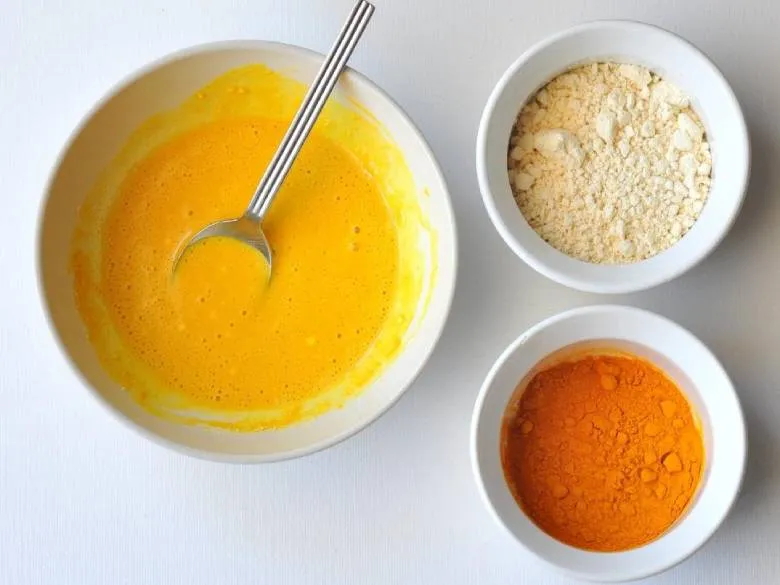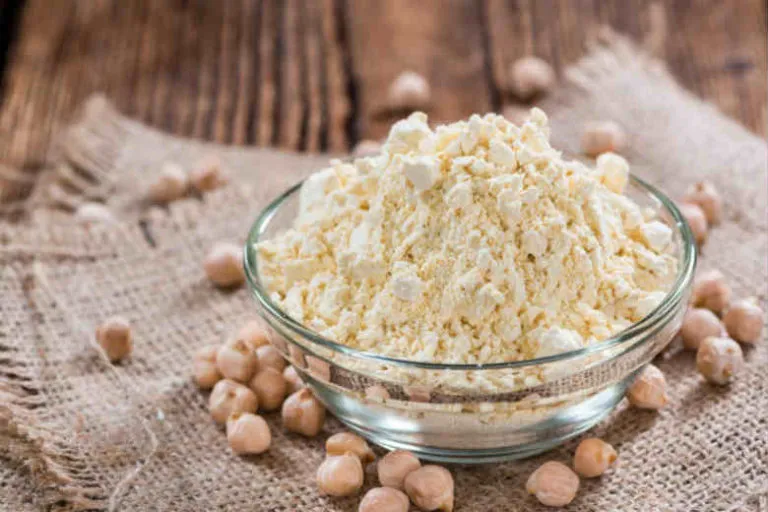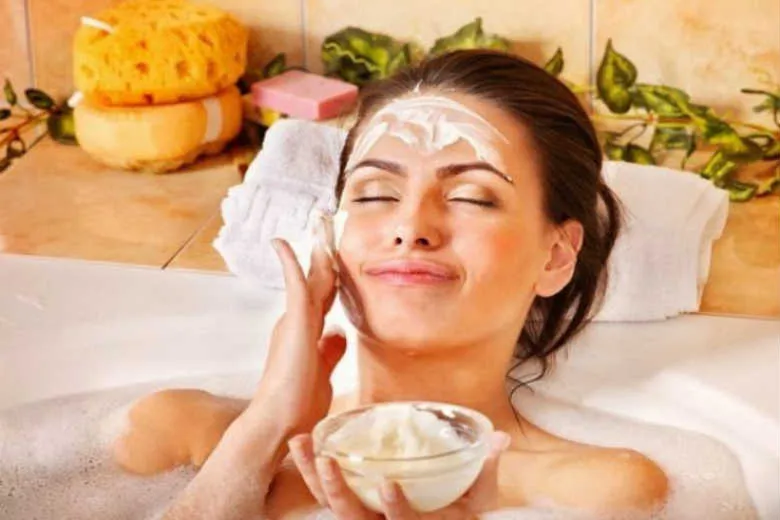What is Besan and Why Does it Work for Skin?
Besan, also known as gram flour or chickpea flour, is a staple in many Indian households and has been used for centuries in traditional skincare practices. It’s made from ground chickpeas and is packed with nutrients that offer a multitude of benefits for the skin. Unlike harsh chemical treatments, besan provides a gentle yet effective way to improve skin health and appearance. Its natural properties make it suitable for various skin types, and it’s a cost-effective alternative to expensive skincare products. The reason besan works so well lies in its unique composition, which includes essential vitamins, minerals, and antioxidants that contribute to skin rejuvenation and radiance. Regular use of besan can help address various skin concerns, from uneven skin tone to acne and sun damage, making it a versatile ingredient for your skincare routine.
The Composition of Besan
Understanding the composition of besan sheds light on why it’s so beneficial for the skin. It’s rich in essential nutrients that contribute to its effectiveness. Besan is a good source of zinc, which helps to fight acne and reduce inflammation. It also contains saponins, which are natural cleansers that gently remove dirt, oil, and impurities from the skin. The presence of B vitamins helps in skin cell turnover and repair, promoting a healthy complexion. Additionally, besan contains antioxidants that combat free radicals, protecting the skin from environmental damage. These antioxidants can reduce signs of aging and promote a more youthful appearance. The combination of these nutrients makes besan a powerful ingredient for achieving radiant and healthy skin.
Benefits of Using Besan for Skin Whitening

The primary reason people turn to besan is its skin-whitening properties. It gently exfoliates the skin, removing dead cells that can cause a dull complexion. This exfoliation reveals brighter, fresher skin underneath. Besan also helps to even out skin tone and reduce the appearance of dark spots and pigmentation. The natural cleansing properties of besan help to remove impurities and excess oil, preventing breakouts and promoting a clearer complexion. Consistent use can lead to a noticeable improvement in skin texture, making it smoother and more radiant. Furthermore, besan is known to soothe irritated skin and reduce inflammation, making it an excellent choice for those with sensitive skin. The benefits are numerous, making besan a fantastic option for anyone seeking to enhance their skin’s natural glow.
Exfoliation and Skin Brightening
Exfoliation is a crucial step in any skincare routine, and besan excels at this. The fine granules in besan act as a gentle exfoliant, effectively removing dead skin cells from the surface. This process not only brightens the skin but also unclogs pores, preventing breakouts. By removing the top layer of dead skin cells, besan allows for better absorption of other skincare products, making them more effective. Regular exfoliation with besan can lead to a smoother, more even skin texture, reducing the appearance of fine lines and wrinkles. The result is a revitalized complexion that appears healthier and more radiant. The natural exfoliating properties of besan make it a safe and effective alternative to harsh chemical exfoliants.
Reducing Hyperpigmentation with Besan
Hyperpigmentation, such as dark spots and uneven skin tone, can be a common concern. Besan can play a significant role in reducing the appearance of these issues. Its gentle exfoliating action helps to fade dark spots over time by removing the pigmented cells from the skin’s surface. The regular use of besan face packs can gradually lighten areas affected by hyperpigmentation, leading to a more even complexion. The antioxidants in besan also help to protect the skin from further damage caused by sun exposure, which can exacerbate hyperpigmentation. Moreover, besan’s cleansing properties help to remove impurities that can contribute to uneven skin tone. While besan provides a natural solution to address hyperpigmentation, it’s important to be consistent with your skincare routine to achieve the best results. Consider using besan alongside other skin-brightening ingredients for enhanced effectiveness.
Besan and its Role in Tanning Removal

Exposure to the sun can lead to tanning, which can darken the skin. Besan is a natural remedy that can help remove tan and restore the skin’s natural color. Its exfoliating properties help to remove the tanned top layer of skin, revealing the brighter skin underneath. When combined with ingredients like lemon juice or yogurt, besan’s tan-removing effects are amplified. Lemon juice contains citric acid, a natural bleaching agent, while yogurt provides soothing and moisturizing benefits. Regular use of a besan face pack can gradually fade tan lines and help to even out skin tone. Moreover, besan helps to soothe sun-exposed skin and reduce inflammation, making it an excellent choice for post-sun care. Its gentle action ensures that the skin is treated delicately, preventing irritation. Combining besan with other ingredients can enhance its effectiveness in addressing sun-induced tanning.
How to Prepare Besan Face Packs for Whitening
Preparing a besan face pack is easy and requires only a few simple ingredients. Generally, you’ll need besan, a liquid base like water, rose water, or milk, and optionally, other ingredients like turmeric, lemon juice, or yogurt, based on your skin type and needs. Start by mixing besan with the liquid of your choice to form a smooth paste. Add other ingredients, such as a pinch of turmeric for its anti-inflammatory properties or a few drops of lemon juice for added brightening effects. Apply the pack evenly to your face and neck, avoiding the eye area. Leave it on for 15-20 minutes or until dry. Gently wash off with lukewarm water and pat your skin dry. For best results, use the face pack 2-3 times a week. Always perform a patch test on a small area of your skin before applying the pack to your entire face to check for any allergic reactions.
Besan Face Pack Recipe for Dry Skin
Dry skin requires a face pack that offers hydration and nourishment. For a besan face pack suitable for dry skin, combine 2 tablespoons of besan with 1 tablespoon of milk or yogurt (which contains lactic acid), and a teaspoon of honey. Honey is a natural humectant that helps to retain moisture. Mix all ingredients until a smooth paste forms. Apply this pack to your face and neck, allowing it to sit for 15-20 minutes. Rinse off with lukewarm water, and pat your skin dry. This combination will gently exfoliate, hydrate, and leave your skin feeling soft and supple. The lactic acid in yogurt will also help to gently exfoliate and brighten the skin. Regular use will help combat dryness and promote a healthy glow.
Besan Face Pack for Oily Skin

Oily skin benefits from a face pack that absorbs excess oil and prevents breakouts. For this, mix 2 tablespoons of besan with 1 tablespoon of rose water (or plain water) and a teaspoon of lemon juice. Lemon juice helps to control oil production. You can also add a pinch of turmeric for its anti-inflammatory properties. Mix the ingredients into a smooth paste and apply it to your face. Leave the pack on for 15-20 minutes, and then rinse it off with cool water. This face pack will help to cleanse pores, reduce oiliness, and leave your skin feeling refreshed. The besan and rosewater combination can help to soothe the skin while controlling excess oil. Using this pack 2-3 times per week can visibly improve the clarity of oily skin and reduce acne.
Besan Face Pack for Combination Skin
Combination skin, which has both oily and dry areas, requires a balanced face pack. Combine 2 tablespoons of besan with 1 tablespoon of yogurt (or milk) and a teaspoon of honey. Yogurt and honey will help to moisturize dry areas, while the besan will cleanse and exfoliate the oilier zones. You can also add a pinch of turmeric for its anti-inflammatory properties. Mix all ingredients into a smooth paste, and apply to your face, allowing it to dry for about 15-20 minutes. Then, rinse off with lukewarm water. This combination will help to balance the skin, addressing both dryness and oiliness. The gentle exfoliation will prevent clogged pores, and the hydration will keep dry areas moisturized. Using this pack 2-3 times a week can greatly improve the overall health of combination skin.
Tips for Maximizing Besan’s Skin Whitening Effects
To get the most out of your besan face packs, consider these tips. Always start with clean skin. Before applying a besan face pack, cleanse your face thoroughly with a gentle cleanser. This will remove any dirt or makeup, allowing the pack to work more effectively. Exfoliate regularly. While besan itself exfoliates, you can boost its effectiveness by exfoliating your skin once a week with a gentle scrub. This helps to remove dead skin cells and reveal brighter skin. Use a toner. After rinsing off the face pack, apply a toner to balance your skin’s pH. Toners also help to shrink pores and prepare your skin for the next steps. Moisturize. Always follow up with a moisturizer to keep your skin hydrated. Choose a moisturizer suitable for your skin type. Apply sunscreen. Protect your skin from sun damage by applying sunscreen with an SPF of 30 or higher every day, especially after using a besan face pack, as your skin will be more sensitive to the sun. These simple tips can significantly enhance the results of your besan skincare routine.
Consistency is Key

Achieving skin whitening with besan requires consistency. Regular use of besan face packs, ideally 2-3 times a week, is essential to see noticeable results. Don’t expect instant changes; it takes time for besan to work its magic and reveal a brighter complexion. Sticking to a consistent routine helps to maintain the positive effects and gradually improve your skin’s health. Be patient and persistent; over time, you’ll likely notice a significant improvement in your skin tone, texture, and overall appearance. Combining besan with a healthy lifestyle that includes proper hydration and a balanced diet will further boost its effectiveness. Make besan a regular part of your skincare regimen and stay committed to the process for the best results.
Sun Protection is Essential
Sun protection is a non-negotiable part of any skin-whitening routine. While besan helps to brighten and even out skin tone, sun exposure can reverse these effects and worsen hyperpigmentation. Applying a broad-spectrum sunscreen with an SPF of 30 or higher every day, regardless of the weather, is crucial. Reapply sunscreen every two hours, especially if you’re spending time outdoors. Sunscreen protects your skin from harmful UV rays, preventing further damage and helping to maintain the results of your besan treatments. Consider wearing protective clothing, like hats and sunglasses, to provide additional protection from the sun. This proactive approach ensures that your skin stays healthy and radiant while protecting it from premature aging and pigmentation issues.
Choosing the Right Besan
The quality of besan you use can affect the results you get. Opt for high-quality, finely ground besan. It should be fresh, and free from any additives or preservatives. You can typically find besan at your local grocery store, Indian grocery stores, or online. Check the packaging to ensure that it’s 100% chickpea flour. Store besan in an airtight container in a cool, dry place to maintain its freshness. If the besan has a stale smell or looks discolored, it’s best to discard it and get a fresh batch. Always check the expiration date on the package. Using high-quality besan guarantees that you’re getting the most out of its benefits, ensuring that your face packs are as effective as possible. Choosing the right besan is the first step towards achieving radiant skin.
Potential Side Effects and Precautions

While besan is generally safe for all skin types, some individuals may experience side effects. Allergic reactions are rare, but it’s always best to do a patch test before applying a face pack to your entire face. Apply a small amount of the mixture to a small area of your skin, such as your inner arm or behind your ear, and wait for 24 hours to see if any irritation occurs. If you notice redness, itching, or swelling, discontinue use. People with sensitive skin might experience some dryness or irritation initially. If this happens, reduce the frequency of your treatments or add more hydrating ingredients to your face packs. Always avoid getting the face pack into your eyes, and rinse thoroughly with water if it does. Pregnant or breastfeeding women should consult with a dermatologist before using besan face packs. Listen to your skin and adjust your routine as needed to avoid potential side effects and ensure a positive skincare experience.
Who Should Avoid Besan Face Packs?
Although besan is gentle and suitable for most skin types, some individuals should exercise caution or avoid it altogether. If you have an allergy to chickpeas or legumes, you should avoid using besan. Individuals with active skin conditions, such as eczema or rosacea, should consult a dermatologist before using besan, as it could potentially irritate sensitive skin. If you’re using other skincare products with potent ingredients, such as retinol or AHAs, it’s best to introduce besan gradually and monitor your skin’s reaction. People with extremely dry or dehydrated skin might find that besan, without the addition of hydrating ingredients, can sometimes exacerbate dryness. Always pay attention to your skin’s specific needs and adjust your skincare routine accordingly. If you experience any unusual reactions, discontinue use and consult a dermatologist. Prioritizing your skin’s health is key to a successful skincare journey.
Alternative Natural Ingredients for Skin Whitening
If besan isn’t the right fit for your skin, there are many other natural ingredients that can help with skin whitening. Turmeric is a powerful anti-inflammatory and antioxidant spice that can help brighten the skin. Aloe vera soothes and hydrates the skin while promoting healing. Lemon juice contains citric acid, a natural bleaching agent, but it should be used with caution due to its potential to cause irritation. Yogurt contains lactic acid, which gently exfoliates the skin. Honey, a natural humectant, can help to hydrate and brighten the skin. Sandalwood powder has cooling properties and helps to even out skin tone. Rice flour acts as a gentle exfoliant and helps to brighten the skin. Before introducing any new ingredient into your routine, always perform a patch test to ensure that it’s compatible with your skin. Incorporating a mix of these ingredients into your skincare routine can give you a comprehensive approach to skin whitening, helping you achieve a radiant and healthy complexion.
